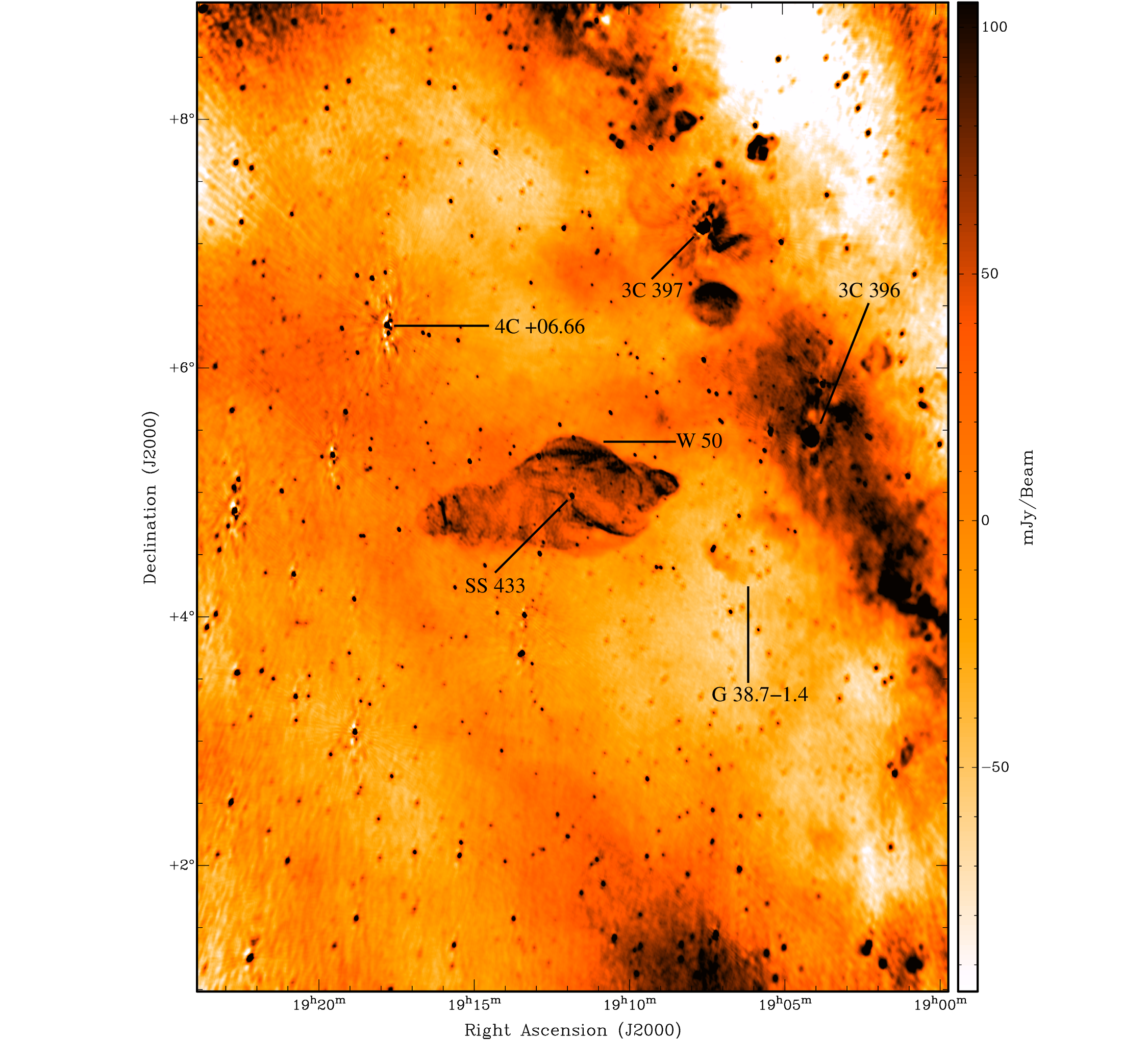Daily Image
13-04-2018A LOFAR map of W50 and SS433
| Submitter: | Jess Broderick |
| Description: | W50 (sometimes referred to as the Manatee Nebula) is a Galactic supernova remnant, approximately 20,000 years old, and located 18,000 light years away. At the centre of W50 is the X-ray binary SS433, whose precessing jets are thought to be responsible for the observed 'ear-like' structures in W50, which has overall dimensions of about 2 deg x 1 deg. Although the W50/SS433 system has been the subject of numerous studies in the literature, only a few of these investigations were carried out at low radio frequencies. Therefore, in 2013-2014, we conducted an observing campaign of W50 and SS433 in the LOFAR high band (centred at 150 MHz) as part of the Transients Key Science Project, with our main goal to characterise the low-frequency properties of radio flares from SS433. In addition, we obtained a detailed map of W50 at an angular resolution of about 1 arcmin, and we also detected a wealth of structure along the nearby Galactic plane, including the most complete detection to date of the radio shell of the supernova remnant G38.7-1.4. The low-frequency morphology of W50, with its complex structure of arcs and filaments, is generally in excellent agreement with previously published studies at higher frequencies. We find additional evidence for spectral turnover in the eastern wing, potentially due to foreground free-free absorption. SS433 is tentatively variable at 150 MHz, with an observed rise in flux corresponding to extended flaring activity at higher frequencies. Further details of our study can be found in the recently published paper Broderick et al. 2018, MNRAS, 475, 5360 ( http://adsabs.harvard.edu/abs/2018MNRAS.475.5360B ). LOFAR, with its excellent low-surface-brightness sensitivity, is facilitating novel Galactic science at low radio frequencies. Many exciting results can be expected in the future from, for example, the LoTSS and MSSS surveys. |
| Copyright: | Jess Broderick et al. |
| Tweet |  |
